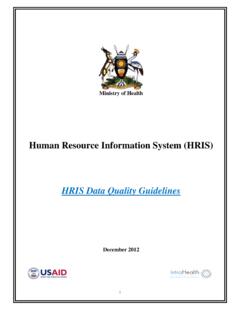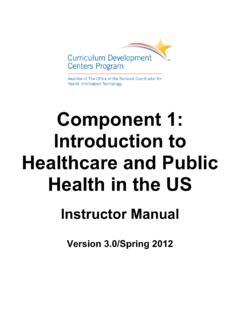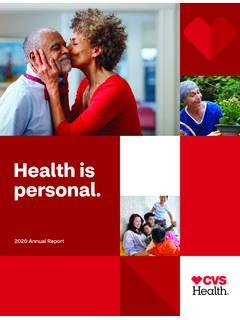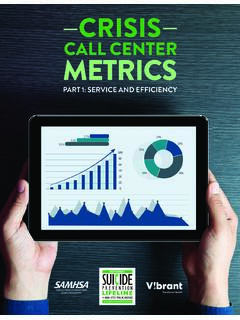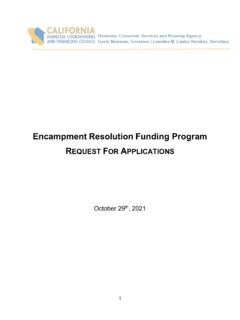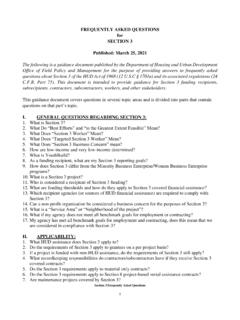Transcription of COVID-19 Testing Framework Implementation Plan ...
1 COVID-19 Testing Framework Implementation Plan - February 2022 Version COV ID-19 COVID-19 Testing Framework Implementation Plan February 2022 COVID-19 Testing Framework Implementation Plan - February 2022 Page 2 Document COVID-19 Testing Framework Implementation Plan Purpose To provide best practice guidance to health professionals involved in the Testing for COVID-19 . This document should be read in conjunction with: Supporting Documents National CDNA and PHLN CDNA National Guidelines for public health Units public health Laboratory Network guidance on laboratory Testing for SARS-CoV-1 (the virus that causes COVID-19 ) QH COVID advice Personal protective equipment (PPE ) | COVID-19 | Queensland Healt h Queensland health Infection Control Guidelines Guide to informed decision-making in healthcare Consumer healthcare rights The Australian Charter of Healthcare Rights Aeromedical retrievals COVID-19 information for aeromedical retrieval of patients Aboriginal and Torres Strait Islander people Queensland public health Guidelines for Managing a COVID-19 outbreak in First Nations communities Testing Checklist for Aboriginal and Torres Strait Islander people Aboriginal and Torres Strait Islander COVID-19 POC Testing Program Guidelines Aboriginal Community Controlled health Services Pandemic Response Toolkit Culturally and Linguistically Diverse Queensland health CALD COVID-19 Policy and Action Plan Australian Red Cross Communicating in Recovery (best practice principles around engagement with people from culturally and linguistically diverse backgrounds)
2 COVID-19 Translated Resources Disability Responding to a suspected case of COVID-19 in disability accommodation and residential services Information for disability support workers and carers on coronavirus ( COVID-19 ) Testing for people with a disability Supporting documents Residential aged care CDNA National Guidelines for the prevention, control and public health management of COVID-19 outbreaks in residential care facilities in Australia Pandemic Response Guidance Personal Protective Equipment in Residential Aged Care and Disability Accommodation Services Infection Control Expert Group (ICEG) Coronavirus ( COVID-19 ) Guidelines for infection Prevention and Control in Residential Aged Care Facilities COVID-19 Testing Framework Implementation Plan - February 2022 Page 3 Document COVID-19 Testing Framework Implementation Plan Correctional facility residents CDNA National Guidelines for the Prevention, Control and public health Management of COVID-19 Outbreaks in Correctional and Detention Facilities in Australia Meat and poultry processing workers Managing the risk of coronavirus ( COVID-19 ) exposure.
3 Meat and poultry processing Meat & Poultry Processing Facility Assessment Toolkit COVID-19 Testing Framework Implementation Plan - February 2022 Page 4 Background The Testing Framework for COVID-19 in Queensland ( Testing Framework ) is intended to outline the full suite of Testing options for SARS-CoV-2 (the virus that causes COVID-19 ) for clinicians and decision-makers in Queensland to optimise case ascertainment and surveillance and inform the public health response. The Framework outlines the priority settings in which Testing is currently being conducted or proposed to be conducted for COVID-19 and emphasises that the highest priority group for Testing is people with symptoms of the disease. The needs of rural and remote populations are integrated into the overall Testing strategy. The Testing Framework is supported by specific consideration of Testing strategies for the following population groups or settings: 1.
4 Quarantine travellers and close contacts of confirmed cases 2. people undergoing aeromedical retrieval 3. Aboriginal and Torres Strait Islander communities 4. people experiencing homelessness 5. people from Culturally and Linguistically Diverse (CALD) communities 6. residential aged care settings 7. people with disability 8. congregate living and working settings. Purpose This document provides guidance on the strategies that have been or will be implemented by Queensland health to ensure that adequate COVID-19 Testing is available to all Queenslanders, where indicated for clinical or public health reasons. Note: Knowledge about COVID-19 is evolving and therefore Queensland health will continue to review and update this Testing strategy as new information becomes available. COVID-19 Testing Framework Implementation Plan - February 2022 Page 5 1 Testing Strategy Summary Objectives To ensure early detection of COVID-19 in Queensland through a Testing strategy that: 1.
5 Ensures that Testing is accessible and that the most appropriate type of Testing is used for each individual s situation 2. Triggers early Implementation of appropriate infection control measures 3. Informs a rapid and effective public health response 4. Triggers activation of Queensland Government rapid response plans and 5. Has regard for the wellbeing, rights and dignity, including a priority focus on consent, advocacy and support for people being tested for COVID-19 . Principles The following key principles apply to the Testing strategy: 1. A risk-based approach is adopted to consider the likelihood of exposure, such as the characteristics of the setting, the nature and needs of people living in these environments, the nature of work performed and the mechanisms available for people to protect themselves from infection in these settings. 2. The Testing capacity must be used to best effect. 3. Testing is reliant on effective prevention, screening and surveillance strategies.
6 4. Testing is universally available it is not restricted based on factors such as financial capacity to pay, legal status, residency, cultural background, age or disability. 5. Testing is encouraged and offered to the benefit of the individual, their family and friends, and the wider community. 6. Testing is reliant on action being taken on the Testing results at an individual, community and population level. Action includes a comprehensive approach to treat, isolate and contact trace to suppress transmission. 7. Testing , including in management of Testing lines, to prioritise access to the symptomatic, frail, elderly, people with disability and priority groups, such as teachers and school children, and other groups as identified from time-to-time. The testi ng strategy and its Implementation are underpinned by the principles of the Australian Charter of Healthcare rights (1): 1. Equity of access to Testing 2.
7 Safety of individuals (consumers and staff) and community 3. Respect for consumer dignity and culture 4. Partnership including rapid access to results of Testing and information about the test and results COVID-19 Testing Framework Implementation Plan - February 2022 Page 6 5. Privacy Methods The Testing strategy is intended to be implemented in a manner that supports any broader strategies and / or benchmarks for COVID-19 in Queensland. The Testing strategy will focus on: 1. Accessibility of Testing with a focus on Testing in symptomatic people, those with epidemiological links (stratified by risk) and in high risk and vulnerable groups 2. Positive results are automatically notified to public health Units and patients, with early Implementation of appropriate infection control and public health measures including isolation of all cases and contact tracing 3. Rapid public health response to confirmed cases occurring in high-risk settings, including aged or disability care settings and congregate living or working settings 4.
8 Identification of new variants of concern or of clusters through whole genome sequencing in collaboration with epidemiological investigations. Core elements of the Testing strategy are outlined in figure 1. Figure 1: Core elements of the QH Testing strategy HHS planning and logisticsEssential and enhanced Testing facilitiesSurge testingSetting considerationsWorkforceConsumablesSpecim en collection & laboratory servicesAccessibility of testingTypes of testsSpecimen collectionTesting: clinical guidanceSuspected COVID-19 Enhanced testingOutbreak testingExpanded Testing (population surveillance)CommunicationsConsumerInter nal communicationsExternal communicationsEvaluationAccessibilitySaf etyEscalationTesting of specific populationsQuarantine travellers and close contactsAeromedical retrievalsAboriginal and Torres Strait Islander communitiesCongregate setting residentsResidents of aged care facilitiesPeople with disabilityPeople experiencing homelessnessCulturally and linguistically diverse communities COVID-19 Testing Framework Implementation Plan - February 2022 Page 7 2 HHS planning and logistics Operational Context COVID-19 Testing programs provided by Hospital and health Service (HHS) public health Units operate in response to the level of the pandemic (as determined by health Directives of Queensland s Chief health Officer)
9 As well as any epidemiological intelligence of the level of virus within local communities. Each HHS with their public health Unit develops strategies and plans to guide their COVID-19 Testing programs. These plans should consider the needs of quarantine travellers and close contacts of confirmed cases, rural and remote populations, Aboriginal and Torres Strait Islander communities, people experiencing homelessness, culturally and linguistically diverse communities, healthcare and residential aged care settings, people with disability and congregate living/working settings. Each HHS with their public health Unit will develop strategies and plans to guide their COVID-19 Testing programs. These plans will need to cover varying contexts: Small discrete townships and outstations Towns with Queensland health Multi-Purpose health Centres (MPHCs) and hospitals only Towns with Queensland health facilities, GPs and private pathology collection centres Cities with COVID-19 Respiratory clinics Discrete Aboriginal and Torres Strait Islander communities prioritising access to those who are symptomatic, the frail, elderly people with disability and to teachers and school children and other groups, as identified Essential and enhanced Testing facilities All Queensland health facilities have plans in place for essential Testing due to symptoms with epidemiological links or epidemiological links alone, and the enhanced Testing of individuals presenting with symptoms of COVID-19 , without epidemiological links (2).
10 Options will include Testing via: Emergency Departments (EDs), Primary Healthcare Clinics, Aboriginal Community Controlled health Services Fever clinics including drive through and walk in options COVID-19 respiratory clinics, supported by Primary health Networks (PHNs) Private pathology providers via General Practitioner (GP) referral (outside of surge Testing ) Pop up Testing clinics implemented during surge Testing periods Surge or outbreak Testing COVID-19 Testing Framework Implementation Plan - February 2022 Page 8 Surge Testing as part of HHS Rapid Response Plans could encompass all of the above with extended hours for established clinics and the use of pop-up clinics. Surge Testing will be of short duration and high intensity. health and Hospital Services (HHSs) and public health Units (PHUs) should have plans in place for surge staffing to support Testing in outbreaks in high-risk settings, when directed by public health Units, and the people with symptoms in the local community when directed by the Chief health Officer (CHO).










